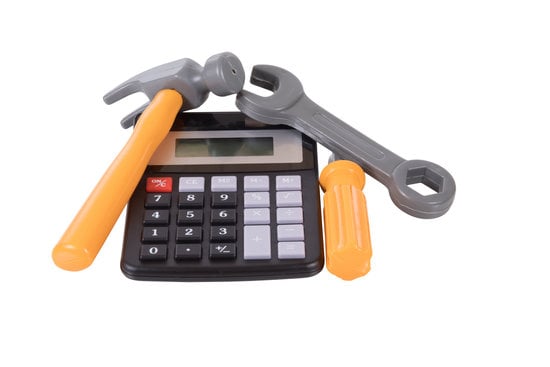When it comes to maintaining and enhancing the value of your property, home improvement projects play a crucial role. Whether you’re looking to remodel your kitchen, update your bathroom, or add an extension, these projects require significant financial investment. This often leads homeowners to wonder if they can get a loan for home improvements. In this article, we will explore the various types of loans available for financing home improvement projects and provide insights into their advantages and disadvantages.
Misconceptions about financing home improvements are common among homeowners. Some may believe that using personal savings or credit cards is enough to cover the costs. However, depending on the scope of the project, these options may not be sustainable or financially feasible. That’s where home improvement loans step in to fill the gap. They provide homeowners with access to funds specifically tailored for these projects and offer flexible repayment options.
Understanding the need for home improvement loans is essential before embarking on any major renovation or remodeling work. With proper guidance and knowledge about different loan options, eligibility criteria, applying process, and benefits, you can make informed decisions regarding financing your home improvement projects. So let’s dive in and explore everything you need to know about obtaining a loan for home improvements.
Types of Home Improvement Loans
When it comes to financing home improvement projects, there are several types of loans that homeowners can consider. Each type has its own advantages and disadvantages, so it’s important to understand the options available before making a decision. Here are some popular types of home improvement loans:
- Personal Loans: Personal loans are unsecured loans that can be used for various purposes, including home improvements. These loans often have fixed interest rates and repayment terms, making it easier for borrowers to budget their monthly payments. However, personal loans may have higher interest rates compared to other loan options.
- Home Equity Loans: A home equity loan allows homeowners to borrow against the equity they have built in their property. This type of loan typically has a fixed interest rate and a longer repayment term.
One advantage of a home equity loan is that borrowers may qualify for higher loan amounts compared to personal loans. However, homeowners should be aware that taking out a home equity loan puts their property at risk if they cannot make the payments. - Government-Backed Loan Programs: The government offers several loan programs specifically designed for home improvements. For example, the Federal Housing Administration (FHA) has a 203(k) program that provides financing for both the purchase and renovation of a property. These government-backed loan programs often have lower interest rates and more flexible qualification criteria compared to traditional loans.
It’s important to carefully weigh the advantages and disadvantages of each type of loan before making a decision. Consider factors such as your credit score, income level, and the value of your property when choosing the best option for your needs.
Eligibility Criteria for Home Improvement Loans
Evaluating Credit Score and Income
When applying for a home improvement loan, lenders typically evaluate several factors to determine an applicant’s eligibility. One of the most important factors is the credit score. Lenders use credit scores to assess the borrower’s creditworthiness and determine the interest rate for the loan. A higher credit score often leads to more favorable loan terms, while a lower score may result in higher interest rates or even denial of the loan application.
In addition to the credit score, lenders also consider the applicant’s income. The borrower’s income provides assurance that they have the means to repay the loan. Lenders typically require documentation such as pay stubs or tax returns to verify income stability and adequacy.
The Value of the Property
Another crucial factor in evaluating eligibility for a home improvement loan is the value of the property being improved. The value of the property serves as collateral or security for the loan, providing lenders with reassurance that their investment will be protected. Lenders may request an appraisal or inspection to determine the current value of the property.
Furthermore, lenders consider how much equity is available in the property. Equity refers to the difference between a property’s current market value and any outstanding loans or mortgages on it. Having significant equity can increase chances of approval for a home improvement loan and potentially allow borrowers to access larger loan amounts.
Specific Requirements for Different Loan Types
Each type of home improvement loan may have its own set of specific requirements beyond credit score, income, and property value. For example, personal loans typically do not require collateral but may have higher interest rates compared to secured options like home equity loans. On the other hand, government-backed loans such as FHA (Federal Housing Administration) loans may have stricter guidelines related to property condition and usage restrictions.
It’s essential for borrowers to research and understand these specific requirements before applying for a home improvement loan. By doing so, they can ensure that they meet all the criteria and choose the loan type that best suits their needs and financial situation.
Applying for a Home Improvement Loan
When it comes to applying for a home improvement loan, there are several important steps to follow in order to increase your chances of approval and secure the best interest rates. Understanding the application process and gathering the necessary documentation will help streamline the loan application process. Here is a step-by-step guidance on how to apply for a home improvement loan:
Step 1: Research and Compare Lenders
Before starting your loan application, take the time to research and compare lenders offering home improvement loans. Look for lenders that specialize in these types of loans and compare their interest rates, fees, repayment terms, and customer reviews. This will help you find the lender that offers the most favorable terms for your financial situation.
Step 2: Gather Necessary Documentation
Once you have chosen a lender, gather all the necessary documentation required for the loan application. This typically includes proof of income such as pay stubs or tax returns, bank statements, credit reports, and information about your property. Make sure to review the lender’s requirements carefully so that you provide all the necessary documents.
Step 3: Complete the Application Form
Next, complete the application form provided by your chosen lender. Be prepared to provide personal information like your full name, contact details, social security number, employment history, and details about your property. Double-check all of your inputs to ensure accuracy before submitting the form.
Step 4: Wait for Approval
After submitting your application form along with all required documentation, you will need to wait for approval from the lender. The timeframe for approval can vary depending on factors such as lender policies and workload. During this period, it is important to be patient and avoid applying for other loans or credit cards that could negatively impact your credit score.
If approved, carefully review the terms of the loan including interest rate, repayment term, monthly payment amount, and any fees involved before accepting it. If denied, don’t be discouraged. You can reach out to the lender for more information about the reasons for the denial and explore alternative options or work on improving your creditworthiness.
| Documentation | Availability |
|---|---|
| Proof of income (pay stubs, tax returns) | Required |
| Bank statements | Required |
| Credit reports | Required |
| Information about the property | Required |
Applying for a home improvement loan can be a straightforward process if you prepare ahead of time and carefully follow the steps outlined above. By doing thorough research, gathering the necessary documentation, and being patient throughout the approval process, you can increase your chances of securing the financing needed to improve your home. Remember to only borrow what you can afford to repay and choose a loan that offers favorable terms for your financial situation.
Benefits of Home Improvement Loans
Increasing Property Value and Creating a Comfortable Living Environment
One of the major benefits of home improvement loans is that they can significantly increase the value of your property. By investing in renovations, repairs, or additions, you can enhance the overall attractiveness and functionality of your home. This can make it more appealing to potential buyers if you decide to sell in the future. Simple updates, such as fresh paint, new flooring, or upgraded appliances, can make a big difference in how your home is perceived by others.
Not only do home improvements increase property value, but they also create a more comfortable living environment for homeowners. Upgrading outdated features or addressing any structural issues can improve the quality of life within your home. For example, installing energy-efficient windows or insulation can result in lower utility bills and increased comfort throughout the year. Moreover, enhancing the aesthetics and functionality of living spaces can make everyday activities more enjoyable.
Potential Tax Benefits and Energy-Saving Incentives
Another advantage of opting for a home improvement loan is that it may offer potential tax benefits. In some cases, certain types of home improvements may be eligible for tax deductions or credits.
For instance, if you install solar panels or energy-efficient HVAC systems, you may qualify for federal tax credits aimed at encouraging eco-friendly practices. It’s important to consult with a tax professional to understand whether you qualify for any tax breaks based on your specific situation.
Furthermore, many government-backed loan programs and financial institutions offer incentives for energy-saving upgrades through their home improvement loan options. These incentives might include lower interest rates or special financing terms specifically designed for eco-friendly renovations such as replacing windows with energy-efficient models or upgrading to ENERGY STAR certified appliances.
It’s essential to research and explore these potential benefits before committing to a specific loan option for your home improvements. By taking advantage of tax benefits and energy-saving incentives through your loan choice, you can further maximize the advantages of financing your home improvement projects.
Overall, home improvement loans offer numerous benefits beyond just providing financial assistance for renovations. They have the potential to increase property value, create a more comfortable living environment, and provide access to tax benefits and energy-saving incentives.
Before securing a loan, it’s important to evaluate your needs and goals carefully, as well as consider your eligibility and financial situation. By making informed decisions and choosing the right financing method, you can embark on your home improvement journey with confidence knowing that you are taking advantage of all the benefits available to you.
Factors to Consider before Taking Out a Home Improvement Loan
When considering taking out a home improvement loan, it is important to carefully evaluate certain factors to ensure that it is the right choice for your situation. Here are some key factors to consider before committing to a home improvement loan:
- Budget and Affordability: Before taking out a loan, assess your overall financial situation and determine if you can comfortably afford the monthly payments. Consider your current income, expenses, and any other debts you may have. It is crucial to have a realistic budget in place to avoid any financial strain or defaulting on the loan.
- Project Scope and Cost: Evaluate the scope of the home improvement project you plan to undertake. Determine the estimated cost of the project by getting quotes from contractors or doing thorough research on material costs if you plan on doing it yourself. Make sure that the loan amount you are considering covers all the expenses associated with your project.
- Interest Rates and Terms: Compare interest rates offered by different lenders before deciding on a loan. Higher interest rates can significantly increase the total cost of borrowing, so it’s important to shop around for the best rate available to you. Additionally, consider the terms of repayment such as the length of the loan term and whether there are any penalties for early repayment or refinancing.
- Potential Return on Investment (ROI): Assess whether the improvements you plan to make will add value to your property in the long run. Consider factors such as market conditions, neighborhood trends, and potential future plans for selling or renting out your property. Home improvements that enhance functionality or energy efficiency often have a higher ROI.
- Loan Options and Eligibility: Research different types of home improvement loans available based on your specific needs and circumstances. Understand their advantages, disadvantages, eligibility criteria, and application process outlined in this article’s previous sections.
Remember that taking on debt should always be approached responsibly and with careful consideration of your current financial situation and future goals. Taking these factors into account will help you make an informed decision about whether a home improvement loan is the right choice for you.
Alternatives to Home Improvement Loans
When considering financing options for home improvement projects, it’s important to explore alternative methods beyond traditional home improvement loans. While these loans can provide a convenient option for funding renovations and upgrades, there are other alternatives that may better suit your financial situation and needs.
One alternative to home improvement loans is utilizing credit cards. Credit cards can offer flexibility and convenience in financing smaller projects or purchasing materials. However, it’s important to consider the high interest rates associated with credit card debt and develop a plan for repayment to avoid excessive charges.
Another alternative is using personal savings. If you have sufficient funds saved up, using your own money can eliminate the need for borrowing and accruing interest. This approach allows you to have full control of your project budget and avoids the potential stress of monthly loan payments.
Cash-out refinancing is yet another option worth considering. This involves refinancing your mortgage for a larger amount than what you currently owe on your home, allowing you to receive cash back that can be used towards home improvements. However, it’s important to carefully consider the long-term effects of refinancing, as it may extend the duration of your mortgage or increase monthly payments.
It’s crucial to weigh the pros and cons of each alternative financing method and determine which one aligns best with your specific circumstances. Each option has its own set of advantages and disadvantages that should be carefully considered before making a decision.
| Alternative | Advantages | Disadvantages |
|---|---|---|
| Credit Cards | Flexibility and convenience | High interest rates |
| Personal Savings | No interest charges or loan repayments | May deplete savings |
| Cash-out Refinancing | Potential for lower interest rates than other loans | Mortgage may be extended or monthly payments increased |
Where to Find Home Improvement Loans
When it comes to finding a home improvement loan, there are several sources that borrowers can consider. Traditional banks, online lenders, credit unions, and government agencies all offer loan programs specifically tailored for financing home improvement projects. Each source has its own advantages and disadvantages, so it’s important for borrowers to compare offers and read loan terms carefully before making a decision.
Traditional banks are a popular choice for many homeowners seeking a home improvement loan. These banks often have established reputations and offer a range of loan options with different interest rates and terms. Borrowers can visit their local bank branch or apply online to begin the application process. However, it’s worth noting that traditional banks may have stricter eligibility criteria compared to other sources, such as higher credit score requirements or more stringent income verification.
For those who prefer the convenience of online lending platforms, there are numerous online lenders that specialize in home improvement loans. These lenders typically offer an easy online application process and quick funding decisions.
Some online lenders even cater to borrowers with lower credit scores or limited credit history, making them more accessible for individuals who may not qualify for loans from traditional banks. However, it’s important to thoroughly research any online lender before applying to ensure they are reputable and trustworthy.
Credit unions are another option worth considering when searching for a home improvement loan. Credit unions are financial cooperatives owned by their members, which means they often offer competitive interest rates and personalized service.
Membership in a credit union is typically required in order to obtain a loan, but many credit unions have relaxed membership eligibility criteria compared to traditional banks. This can make it easier for borrowers to join a credit union and take advantage of their favorable loan terms.
Lastly, government agencies also provide loan programs specifically designed for home improvements. For example, the Federal Housing Administration (FHA) offers the Title I Property Improvement Loan program which allows homeowners with limited equity or low credit scores to borrow funds for eligible improvements.
Additionally, the U.S. Department of Agriculture (USDA) and the Department of Veterans Affairs (VA) have loan programs available for eligible individuals in rural areas and veterans, respectively. These government-backed loans often have flexible criteria and may offer lower interest rates or more lenient approval requirements.
Conclusion
In conclusion, when it comes to financing your home improvement projects, it is important to make smart choices that align with your financial goals and needs. Throughout this article, we have discussed the various types of home improvement loans available, their eligibility criteria, and the application process. We have also explored the benefits of these loans, important factors to consider before taking one out, as well as alternative financing options.
To ensure that you are making the right decision for your home improvement financing, thorough research and careful consideration are crucial. It is essential to evaluate your budget and long-term financial plans before committing to a loan. Consider factors such as your monthly expenses and income stability in order to determine what loan amount you can comfortably afford.
Additionally, weigh the advantages and disadvantages of each loan type and alternative financing option. While some loans may offer lower interest rates and longer repayment terms, they may require strict eligibility criteria or collateral. On the other hand, using personal savings or credit cards may result in higher interest rates but provide more flexibility in terms of repayment.
Overall, it is important to choose a financing method that aligns with your specific home improvement needs and financial situation. By carefully considering all options available to you, comparing offers from different lenders or sources, and planning ahead realistically for your project costs, you can make an informed decision that will help enhance the value of your property while keeping your finances in check.
Frequently Asked Questions
Are renovation loans a good idea?
Renovation loans can be a good idea for certain individuals and situations. These loans provide borrowers with the necessary funds to make improvements or upgrades to their homes, which can increase the value of the property. They are particularly beneficial for homeowners who want to renovate their house but do not have sufficient savings or cash on hand.
Renovation loans typically come with lower interest rates than personal loans or credit cards, making them a more affordable option for financing home improvement projects. However, it is crucial for borrowers to consider their financial situation carefully and ensure that they can repay the loan comfortably before committing to it.
What is the difference between a home loan and a home improvement loan?
The main difference between a home loan and a home improvement loan lies in how borrowers can use the borrowed funds. A home loan, often referred to as a mortgage, is primarily used to finance the purchase of a property. It provides borrowers with a lump sum that covers the cost of buying the home, and repayment usually occurs over an extended period, often 15 or 30 years.
On the other hand, a home improvement loan is specifically designed to fund renovations or repairs on an existing property. The borrowed money is intended solely for making improvements to enhance the value of the house.
Can renovations be loans?
Yes, renovations can be funded through loans. Homeowners have various options when considering financing their renovation projects, ranging from personal loans and lines of credit to specific renovation loans offered by banks and other financial institutions.
These types of loans provide individuals with the necessary funds upfront so that they can cover all expenses associated with their renovations without having to rely on their savings exclusively. The advantage of obtaining a renovation loan is that it allows homeowners greater flexibility in undertaking substantial improvements that may require significant amounts of money upfront but could ultimately increase the value and enjoyment of their property in the long run.

I’m thrilled to have you here as a part of the Remodeling Top community. This is where my journey as an architect and remodeling enthusiast intersects with your passion for transforming houses into dream homes.





